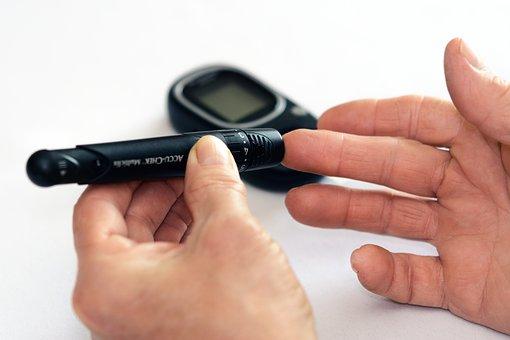
November is Diabetes Awareness Month! Join us in celebrating this incredible community all month long. This is a great time to learn more about the autoimmune disease Type One Diabetes, how you can spot it, help others, and stay healthy. This month our articles will focus on ways that you can eat better, move better, and eliminate the harmful habits that are keeping you from living your fullest and happiest life.
What is the Difference Between Type 1 and Type 2 Diabetes?
There are two main types of diabetes: type 1 and type 2. Both types of diabetes are chronic diseases that affect the way your body regulates blood sugar, or glucose. Glucose is the fuel that feeds your body’s cells, but to enter your cells it needs a key. Insulin is that key.
People with type 1 diabetes don’t produce insulin. This means that they cannot process glucose as a fuel for their body. The glucose stays in the blood and damages tissues. Think about how you get sand in your shoe and it irritates your skin. The glucose can irritate your blood vessels and tissues the same way..
People with type 2 diabetes make insulin, but they don’t respond to insulin as well as they should. Later as the disease progresses, they often don’t make enough insulin. You can think of this as having a key that only works when you hold it just right and wiggle it a little and stand on one foot and still only works some of the time.
Both types of diabetes can lead to chronically high blood sugar levels that increase the risk of diabetes complications.
What are the symptoms of diabetes?
Both types of diabetes, if not controlled, share many similar symptoms, including:
frequent urination
feeling very thirsty and drinking a lot
feeling very hungry
feeling very fatigued
blurry vision
cuts or sores that don’t heal properly
People with type 1 diabetes may also experience irritability and mood changes, and unintentionally lose weight. People with type 2 diabetes may also have numbness and tingling in their hands or feet.
Although many of the symptoms of type 1 and type 2 diabetes are similar, they present in very different ways. Many people with type 2 diabetes won’t have any symptoms for many years. The symptoms of type 2 diabetes develop slowly over the course of time. Some people with type 2 diabetes have no symptoms at all and they don’t discover their condition until complications develop.
The symptoms of type 1 diabetes develop fast, typically over several weeks. Type 1 diabetes usually develops in childhood or adolescence. But it’s possible to get type 1 diabetes later in life.
What causes type 1 diabetes?
The body’s immune system is responsible for fighting off foreign invaders like harmful viruses and bacteria. In people with type 1 diabetes, the immune system attacks and destroys the insulin-producing beta cells in the pancreas. After these beta cells are destroyed, the body is unable to produce insulin.
Researchers don’t know why the immune system attacks the body’s own cells. It may have something to do with genetic and environmental factors, like exposure to viruses.
What causes type 2 diabetes?
People with type 2 diabetes have insulin resistance. The body still produces insulin, but it’s unable to use it effectively. Researchers aren’t sure why some people become insulin resistance and others don’t, but several lifestyle factors may contribute to the development of the resistance, including excess weight and inactivity.
Other genetic and environmental factors may also contribute. When you develop type 2 diabetes, your pancreas will try to compensate by producing more insulin. Because your body can’t use insulin effectively, glucose will build up in your bloodstream.
How common is diabetes?
Type 2 diabetes is much more common that type 1. According to the 2017 National Diabetes Statistics Report, there are 30.3 million people in the United States with diabetes. That’s close to 1 in 10 people. Among all these people living with diabetes, 90 to 95 percent have type 2 diabetes.
Men and women get diabetes at roughly the same rate, but incidence rates are higher among certain races and ethnicities. American Indians and Alaskan Natives have the highest prevalence of diabetes among both men and women. The black and Hispanic populations have higher rates of diabetes than non-Hispanic whites.
The Role of Hypnosis
Whether you are diabetic, or you know someone who is, you are probably aware of the struggles in maintaining a healthy lifestyle, balancing medications and exercise, and finding the best treatment that fits a person’s individual needs. There are many ways that hypnosis can help from the moment someone is diagnosed with diabetes and throughout their treatment.
Hypnosis can help aid in weight loss, maintaining new health habits, overcoming fear of needles, motivation to exercise, pain management, grief resolution, and easing into lifestyle changes.
We’ll learn more in the weeks to come about how using hypnosis can help to improve the quality of life for those living with diabetes.∎
Karen Gray is a Certified Hypnotist, a Registered Nurse, and the Director of Green Mountain Hypnosis. For more information on how you can use hypnosis to change your life, you can visit www.greenmountainhypnosis.com, contact Karen at karengray@greenmountainhypnosis.com, or call (802) 566-0464.